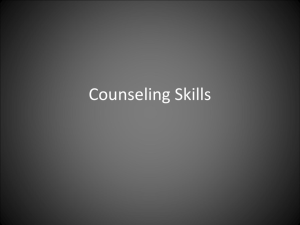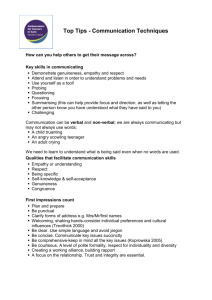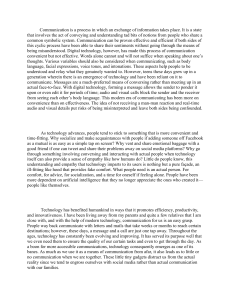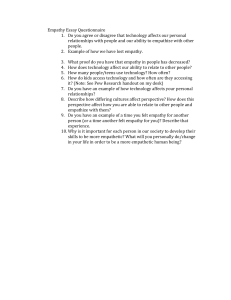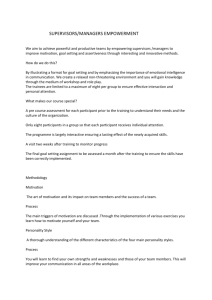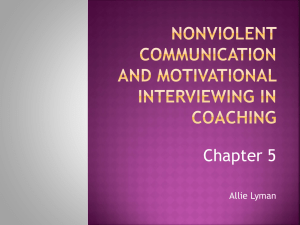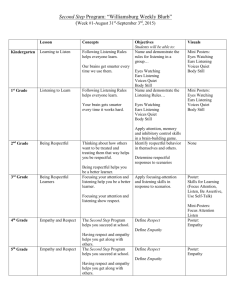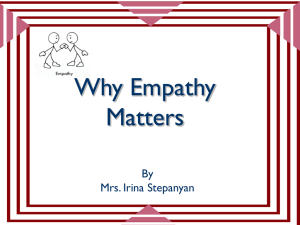Group Facilitation Skills I
advertisement
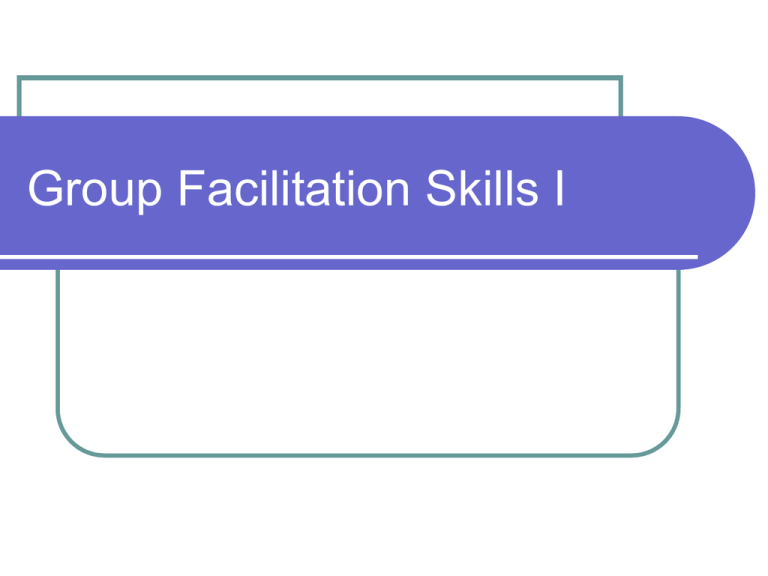
Group Facilitation Skills I Learning Objectives Describe the six core skills of group facilitation. Demonstrate using reflective listening in group situations. Demonstrate communicating with empathy in group situations. Utilize a self-monitoring tool to enhance application of skills. The Basics about Groups A group is an interaction or relationship between three or more people that share something in common. The Purpose of the Group Groups serve many functions and purposes. Brainstorming: what kinds of groups do you know about? Cohesion One very important element about groups is the strong bonds that are created between members. Strong cohesion = satisfaction of group members = success of the group The Comfort Agreement Creating safety. Articulating the norms of the group. Group Leader Responsibilities Focus the group on achieving its goals. Kindly enforce the Comfort Agreement. Work well with your co-facilitator. Encourage everyone’s participation. Encourage cohesion – find similarities. Demonstrate tolerance. The Phases of Groups The Pre-Group Phase Planning what the group is about, who it is for and determining co-facilitators. The Initial Phase Welcome people. Review the purpose of the group. Review the logistics. Create the Comfort agreement. Encourage cohesion and interaction among group members. Welcome to the Fishbowl! The Core Skills Welcoming Listening Communicating with empathy Providing feedback Self-monitoring Managing the group Reflective Listening Repeating/rephrasing Paraphrasing Reflection of feeling Communicating with empathy Empathy is defined as “identification with or vicarious experiencing of the feelings, thoughts, or attitudes of another”. Empathy is best communicated through good listening. Self-Reflection

